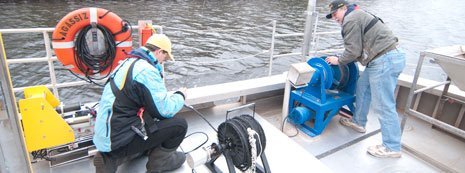Document Type
Article
Publication Date
3-14-2019
Abstract
Structure from Motion (SfM)/Photogrammetry is a powerful mapping tool in extracting three-dimensional (3D) models from photographs. This method has been applied to a range of applications, including monitoring of infrastructure systems. This technique could potentially become a substitute, or at least a complement, for costlier approaches such as laser scanning for infrastructure monitoring. This study expands on previous investigations, which utilize photogrammetry point cloud data to measure failure mode behavior of a retaining wall model, emphasizing further robust spatial testing. In this study, a comparison of two commonly used photogrammetry software packages was implemented to assess the computing performance of the method and the significance of control points in this approach. The impact of control point selection, as part of the photogrammetric modeling processes, was also evaluated. Comparisons between the two software tools reveal similar performances in capturing quantitative changes of a retaining wall structure. Results also demonstrate that increasing the number of control points above a certain number does not, necessarily, increase 3D modeling accuracies, but, in some cases, their spatial distribution can be more critical. Furthermore, errors in model reproducibility, when compared with total station measurements, were found to be spatially correlated with the arrangement of control points.
Publication Title
Data
Creative Commons License

This work is licensed under a Creative Commons Attribution 4.0 International License.
Recommended Citation
Oats, R.,
Escobar-Wolf, R.,
&
Oommen, T.
(2019).
Evaluation of photogrammetry and inclusion of control points: Significance for infrastructure monitoring.
Data,
4(1).
http://doi.org/10.3390/data4010042
Retrieved from: https://digitalcommons.mtu.edu/cee-fp/84
Version
Publisher's PDF


Publisher's Statement
© 2019 by the authors. Licensee MDPI, Basel, Switzerland. Article deposited here in compliance with publisher policies. Publisher's version of record: https://doi.org/10.3390/data4010042